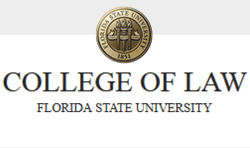Document Type
Article
Publication Date
Summer 2011
Publication Title
Florida State University Law Review
Publication Title (Abbreviation)
Fla. St. U. L. Rev.
Volume
38
Issue
4
First Page
827
Last Page
882
Abstract
This Article explores a constantly recurring procedural question: When is fact-finding improved by a live hearing or trial, and when would it be better to rely on a written record? Unfortunately, when judges, lawyers, and rulemakers consider this issue, they are led astray by the widely shared—but false—assumption that a judge can best determine issues of credibility by viewing the demeanor of witnesses while they are testifying. In fact, a large body of scientific evidence indicates that judges are more likely to be deceived by lying or mistaken witnesses when observing live testimony than if the judges were to review a paper transcript. Witness presence, in other words, may often harm, rather than improve, the accuracy of credibility assessments. The fact that legal actors value hearings for mistaken reasons does not mean that hearings have no value, but it does raise the concern that live procedure will be employed when it is unneeded or even counterproductive, especially given the lack of available guidance on this question. In this Article, I attempt to remedy this problem by suggesting some guiding principles that lawyers, courts, and rulemakers could rely on when choosing between live and paper-based fact-finding.
Live hearings and trials will often, but not always, do more harm than good. In addition to the fact that demeanor cues generally impair credibility judgments, there are a number of cognitive biases that may arise from having one’s first impressions of a witness be visual and auditory impressions. These include a persistent human tendency to trust or distrust witnesses based on their physical attractiveness, their social status, their race, or other features that may make them similar to, or different than, the fact-finder. On the flip side, live factfinding may help a judge make sense of confusing evidence. In addition, in-court hearings may feel fairer to participants than paper-based decisions, due in large part to the desire to have expressive input in decisions that affect their well-being. And occasionally, a live hearing or trial may be preferable for reasons of cost or practicality.
A better understanding of the costs and benefits of live fact-finding could have profound implications for the design of our civil justice system. Our current approach relies on predominantly paper-based, pretrial fact-finding, followed in rare cases by a live trial process. Unfortunately, this system uses paper-based procedures at a point when live hearings may often be cheaper and more reliable, then shifts to live examination when its benefits will have evaporated and its costs are likely to be prohibitive. A preferable system would allow for more live hearings early in a case. Even when there is no direct credibility conflict, live proof at this stage may increase the legitimacy of rulings, may lower litigation costs, and will often be more reliable than the paper-based alternative of affidavit evidence. By contrast, rulemakers should be more willing to authorize—and judges should be more willing to use—paper trials at the final fact-finding stage of a dispute. At this late stage, live procedure is expensive and unreliable, and as a result litigants use it so rarely that it provides them with few opportunities for self-expression. In short, we should reverse our present approach to civil case fact-finding by holding more live pretrial hearings and more paper trials.
Rights
© 2011 Emily Spottswood
Faculty Biography
http://law.fsu.edu/our-faculty/profiles/spottswood
Recommended Citation
Emily Spottswood,
Live Hearings and Paper Trials, 38
Fla. St. U. L. Rev.
827
(2011),
Available at: https://ir.law.fsu.edu/articles/108

Comments
First published in Florida State University Law Review.